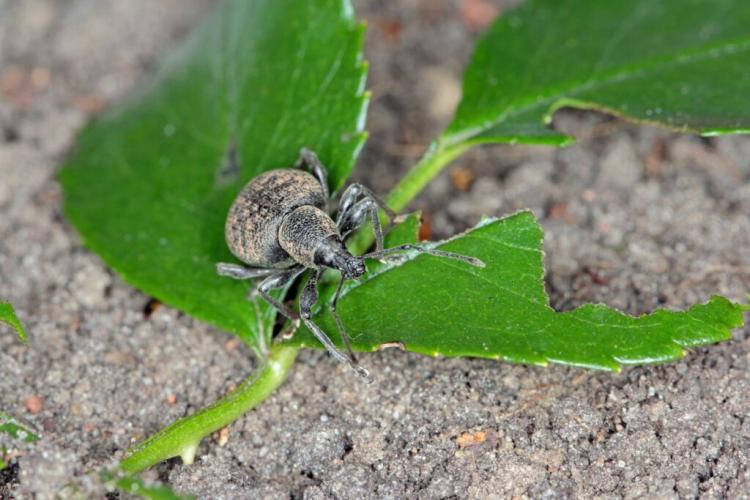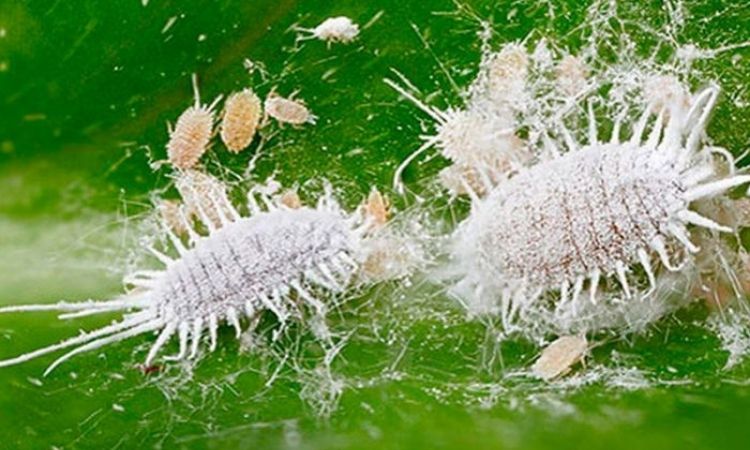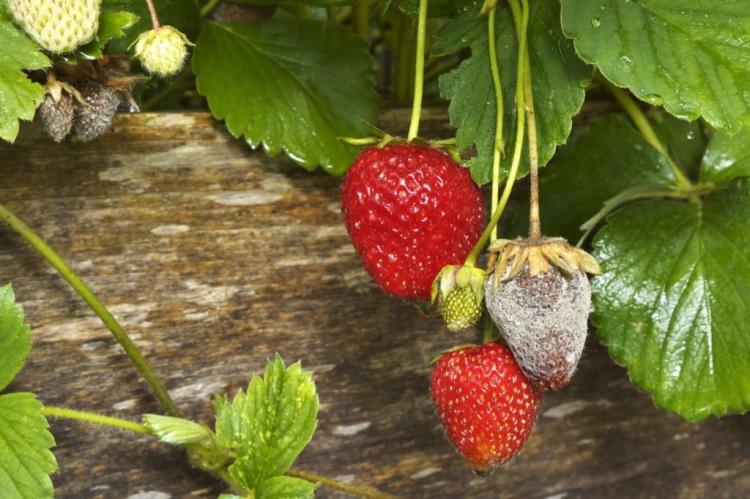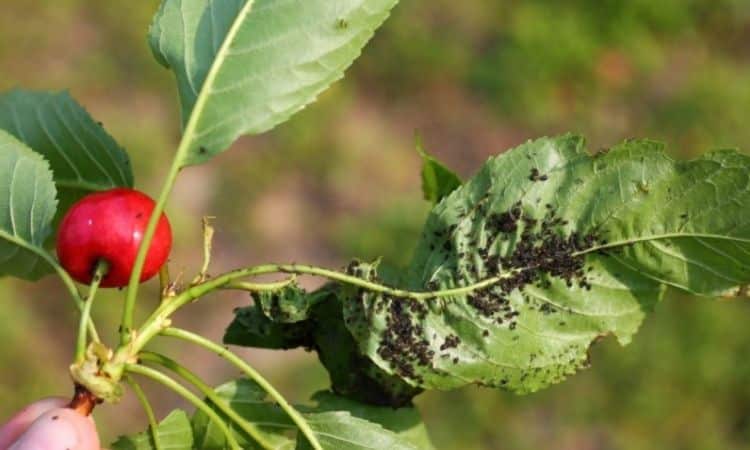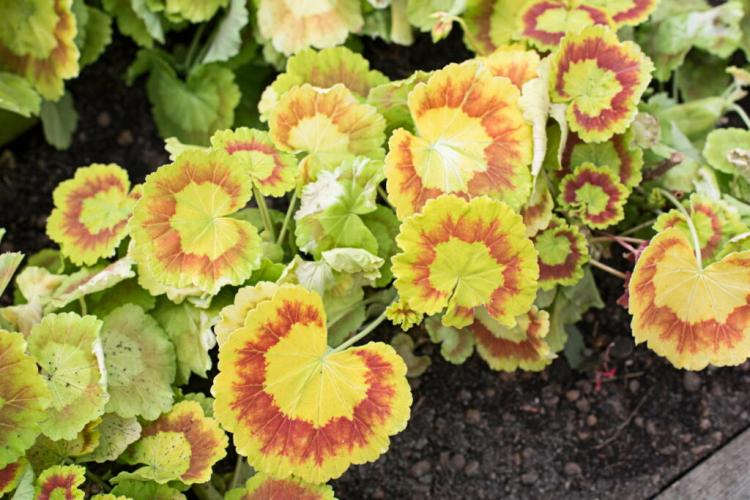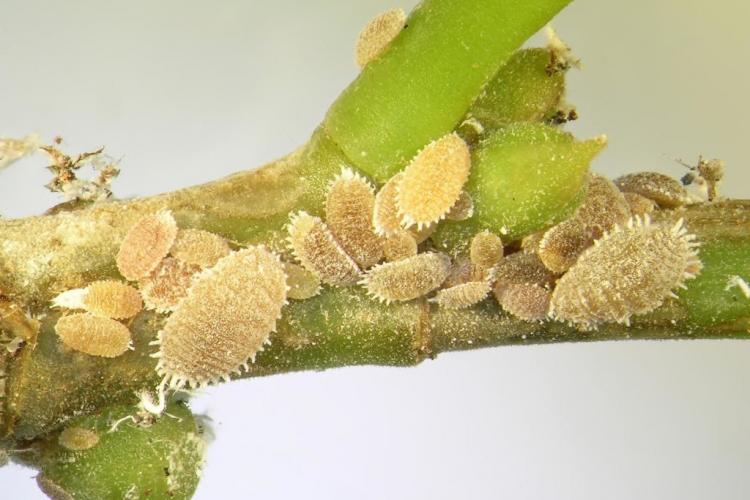Black Vine Weevil: Preventing & Controlling
Black weevils are common pests, especially on ornamental plants such as rhododendrons and hydrangeas. We’ll show you how to fight the weevils with natural means.
The voracious black weevil and its larvae attack many of our plants in the garden and can even kill them. Here we show you how you can prevent this and what can be done against the weevils.
Black vine weevil: characteristics and way of life
Table of Contents
The vine weevil (Otiorhynchus ), also known as the vine weevil, is a genus of the weevil family (Curculionidae). The furrowed black weevil ( Otiorhynchus sulcatus ) is also called the white weevil and is one of the most common species in Central Europe.
The adult black weevils are dark brown to black in color and usually have light brown markings. Black weevils cannot fly. The back is often fluted or curved. The beetles reach a size of three to twelve millimeters and have a powerful trunk, which is why they owe their name.
The black weevil is nocturnal, which is why they are well hidden during the day and only become active at dusk. Most species feed on various herbaceous and woody plants. The beetles can be seen between April and October at dusk or night. But how do weevils get into the garden? This often happens through the introduction of eggs or larvae into the substrate of potted plants.
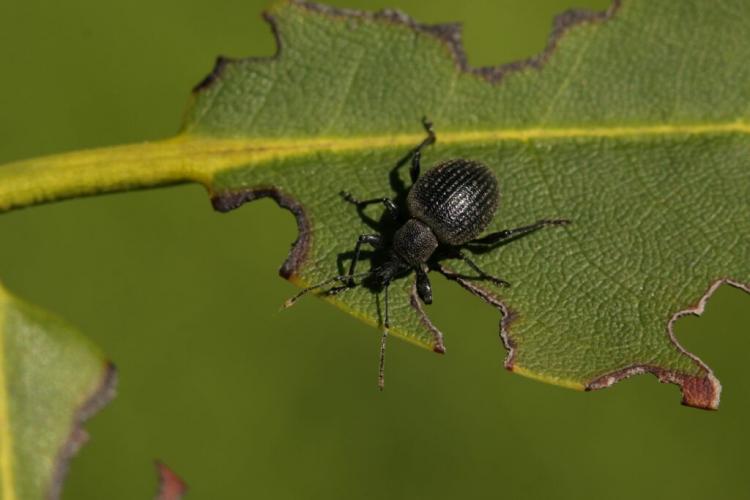
The black weevil life cycle is partly species-specific. The females lay eggs on the ground in summer. In autumn, larvae hatch from the unfertilized eggs of the black weevil and feed on roots and tubers. The larvae overwinter in the ground and pupate in spring. The adult black weevils emerge from it in early summer and can live up to three years.
Recognizing the black weevil: damage and symptoms
Before the adult beetles start to lay their eggs, the so-called “ripening” takes place between May and September. The resulting increased feeding bays on the leaves indicate that the eggs will soon be laid and thus that the larvae will appear soon – so action must be taken.
The damage caused by black weevils is particularly common in:
- Rhododendron ( rhododendron ),
- Hydrangea (Hydrangea)
- Geraniums ( pelargonium ),
- Roses ( pink ),
- Yew trees ( Taxus ),
- Ivy ( Hedera helix ),
- Medlars ( Mespilus germanica ),
- Cherry laurel ( Prunus laurocerasus ),
- Grapevines ( Vitis ),
- Heather ( Erica, Calluna ),
- Tree of Life ( Thuja ),
- Chrysanthemums ( Chrysanthemum ),
- Fuchsias ( Fuchsia ),
- Primroses ( primula ),
- Cyclamen as well as various perennials, berry bushes, and wild herbs.
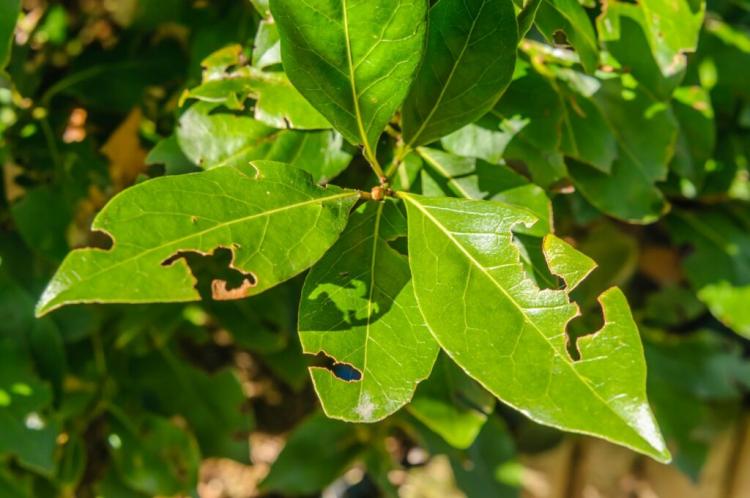
The often much greater damage is hidden underground and is caused by the vine weevil larvae. The larvae hatch from microscopic, almost transparent eggs in autumn. The vine weevil larvae can reach a length of up to ten millimeters and can be recognized by their brown head and white body. However, it is difficult to distinguish it from other larvae.
First, the young larvae eat the root hairs, later even woody parts of the roots can be attacked. In the case of cyclamen, the entire tuber can be hollowed out. Symptoms of plant infestation by black weevil larvae are downward-hanging leaves in autumn or a lack of nutrients despite an adequate supply of water and nutrients. This is because the plant no longer has enough roots available. In addition, the damage caused by feeding is the gateway for soil-borne pathogens that can also damage the plants.
Fight black weevils
If the vine weevils have spread to your garden, there are several ways you can combat them. However, the number of pesticides against black weevils is low.
Fight black weevils biologically
The collection of leaves and shoots from adult animals is a biological means of control. Since the black weevil is only active at night, this is best done in the late evening with a flashlight. The black weevils drop with slight movements of the leaves. It is, therefore, best to place a tarpaulin under the plant so that you can catch the fallen beetles. You can take advantage of this property by shaking the infested plant. The use of a biological agent is a much less complex way of combating it.
The oil of the neem tree offers a plant-based possibility to fight black weevils. The active ingredient of neem oil is absorbed by the plant and thus offers the possibility of catching the hidden beetles. Our Gardender organic pest-free neem is based on this purely herbal active ingredient. Organic pest-free neem offers quick protection from eating, as the beetles absorb the active ingredient when they eat on the plant and lose their appetite.
In addition, organic pest-free neem is not harmful to bees and can be used against various biting, leaf-mining, and sucking insects. To use, simply mix organic pest-free neem with water and apply the emulsion to the infected plant. The correct mixing ratio can be found in the product packaging. Please use our organic pest-free Neem exactly as specified in the application recommendation and read the package insert before use.
Fight black weevils chemically
Black weevils are well hidden during the day and are therefore difficult to control with contact insecticides. To protect beneficial insects in your garden and you as a user, we recommend that you avoid synthetic insecticides.
Approved synthetic pesticides against the black weevil contain the active ingredients acetamiprid and active ingredients from the group of pyrethrins, which are mostly used in combination with abamectin. Pyrethrins can be obtained from plants, but they are poisonous for most insects and therefore also damage beneficial organisms. Acetamiprid is one of the neonicotinoids and is considered dangerous to bees.
Fight black weevils with home remedies
As a preventive measure and in the event of a slight infestation, home remedies against black weevils are available.
Tansy tea against black weevils
For the tansy tea, you need about two handfuls of blooming tansy plants ( Tanacetum vulgare ) or 30 grams of dried tansy, which you brew with a liter of boiling water. Simply let the tansy tea cool down and spray the tea undiluted onto the infested plants. The optimal time for use is between May and June.
Wormwood manure against black weevils
To make vermouth manure, you need 300 grams of fresh or 30 grams of dried wormwood ( Artemisia absinthium ), which you ferment in ten liters of water. If the vermouth no longer foams after about two weeks, this is a sign that it has fermented completely. You can use the liquid manure undiluted to keep the black weevils away from your beds.

Garlic or coffee grounds against vine weevils
Garlic ( Allium sativum ) or coffee grounds have a deterrent effect on the vine weevil and are very easy to use. To do this, cut a clove of garlic into small pieces and mix them into the soil. You can also easily work the coffee grounds into the soil. It is best to repeat this method once a month.
Fight vine weevils with nematodes
Another possibility for biological control is the use of nematodes (Nematoda) against black weevils. These will enable you to control the vine weevil larvae. The microscopic nematodes move actively in the groundwater to the larvae of the black weevil and penetrate them. They transmit bacteria that eventually kill the black weevil larvae. Our Gardender HB nematodes of the species Heterorhabditis bacteriophora can also be used successfully against black weevils.
To use, stir the nematodes as soon as possible after receipt according to the package insert in water and pour them over the affected areas. After being released, the beneficial insects attack the vine weevil larvae in the soil and kill them. The application of nematodes against black weevils takes place between April and May or between August and September. You can find out how to use nematodes as beneficial insects in our special article.
Summary fighting black weevils:
- Collect adult black weevils at night
- Biological agents based on neem oil, such as our Gardender pest-free neem
- Home remedies, such as tansy tea, vermouth, and garlic
- Nematodes like our Gardender HB nematodes for controlling larvae

Preventing vine weevils
A first preventive measure is to avoid bringing in eggs and larvae of the black weevil through acquired potted plants. We, therefore, recommend you examine new plants for the small larvae in the root ball and to complain about the plant if they are infected. Regularly checking the root ball for black weevil larvae, for example by repotting, is also a preventive measure. When choosing the plant substrate, we recommend that you pay attention to peat-free soil, since weevils apparently prefer peat substrates. Our Gardender organic universal soil, for example, is peat-free and provides your plants with long-lasting nutrients.
You can prevent mass reproduction and spread to other plants by promoting beneficial insects. Natural predators of the black weevil include hedgehogs, moles, common toads and birds, lizards but also many ground beetles and even ear peasants. A natural garden design with an undisturbed corner and an accumulation of brushwood and pieces of bark help hedgehogs to feel comfortable. Nesting areas for birds are a great way to welcome the beneficial birds into the garden.
Black Weevil Trap
Since black weevils are nocturnal and hide during the day, you can use this to catch adult black weevils. To do this, simply take a flower pot and fill it with wood wool, for example. Then place this flower pot with the opening facing down on the ground, preferably near the heavily infested plants. Try to set up the pot at a slight angle so that the beetles can climb into it unhindered to hide there during the day. Check the pots regularly and remove the trapped bugs.
If you don’t have a flower pot left, you can also use pieces of wood that you put out in the garden. The vine weevils will also hide under the pieces of wood, where you can collect them. Pieces of wood that have a few grooves are particularly suitable for this. This is where the beetles can hide well.
The larvae of the sciarid gnats also eat roots. This can cause symptoms similar to those caused by black weevil larvae. We’ll show you how to fight sciarid gnats.
You might so like:
- Tobacco Beetle: Recognize And Fight The Cigar Enemy
- Blackbox Gardening: Advantages, Disadvantages, And Procedure
- Camellia Diseases: Recognizing, Fighting & Preventing (Professional Tips)
- Flour Moths: How To Get Rid Naturally, Recognize And Prevent
- Black Bean Aphid: Detection, Prevention, And Biological Control
